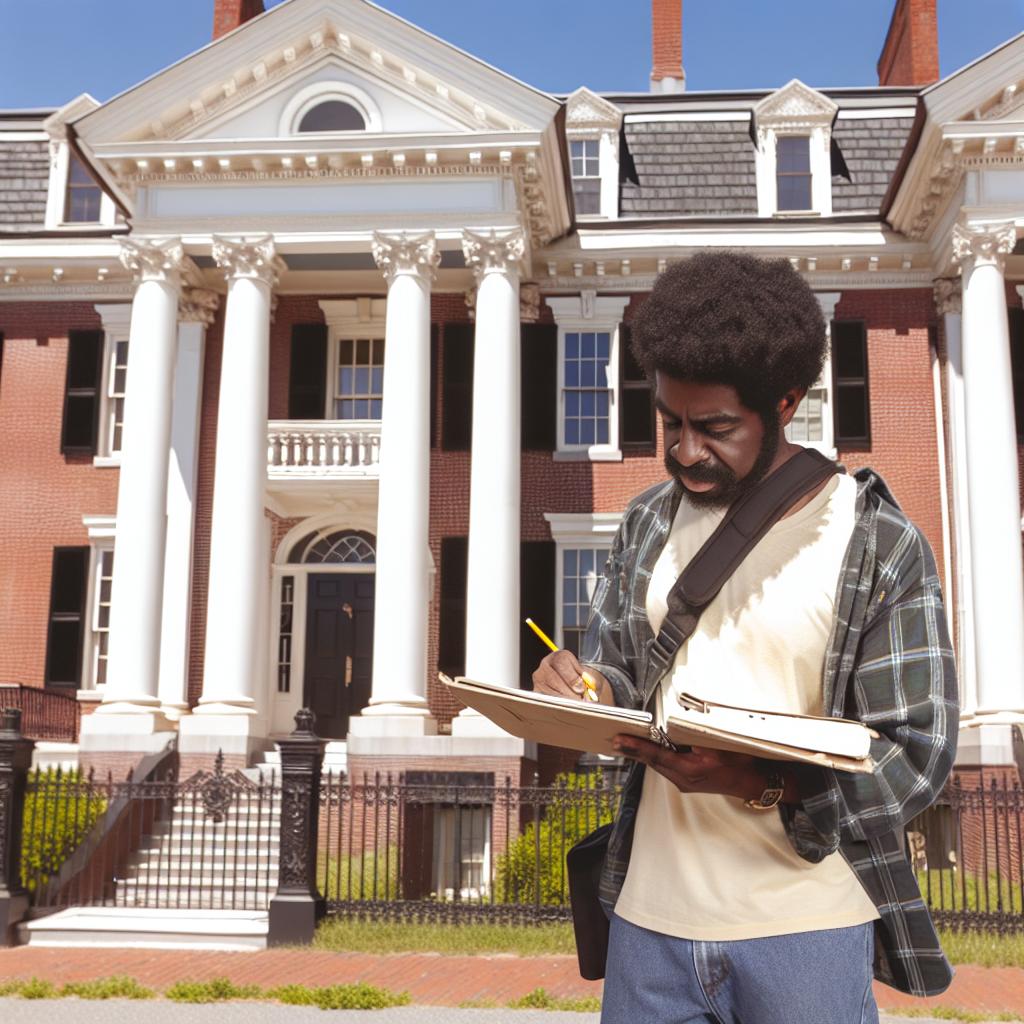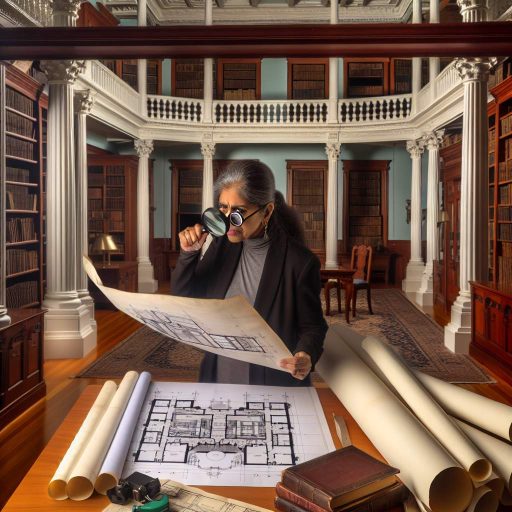Introduction to Historic Luxury Homes in the USA
Historic luxury homes represent the pinnacle of architectural achievement in the USA.
These residences showcase exquisite craftsmanship and unique design styles.
They often feature intricate details that tell stories of their time.
Many historic homes are nestled in culturally rich neighborhoods.
These homes reflect the lifestyle and preferences of the elite from a bygone era.
The Allure of Architectural Styles
Various architectural styles dominate the landscape of historic luxury homes.
For instance, the Colonial style embodies classical symmetry and proportion.
In contrast, Victorian homes captivate with their ornate decorations and complexity.
Additionally, the Art Deco style offers a bold and glamorous aesthetic.
Each style contributes to the diverse architectural heritage of the country.
Cultural Significance and Preservation
Preserving historic luxury homes ensures cultural heritage is honored.
These homes serve as educational sites, showcasing historical lifestyles and design.
Historic preservation societies work tirelessly to protect these treasures.
Moreover, renovated homes provide insight into past building techniques.
Visitors often find inspiration in the beauty and elegance of these homes.
Exploring Notable Examples
Numerous iconic homes stand out across the USA.
The Mark Twain House in Hartford, Connecticut, highlights rich literary history.
The Gamble House in Pasadena showcases the Arts and Crafts movement.
Meanwhile, the Biltmore Estate in North Carolina exemplifies luxury on a grand scale.
Each example offers a glimpse into the opulence of historic living.
The Historical Significance of Architectural Styles
Understanding Architectural Evolution
Architectural styles reveal much about a society’s values and technological advancements.
They provide a window into historical preferences and cultural influences.
Each era brought distinct designs reflecting contemporary aesthetics and needs.
As a result, these structures form a visual narrative of American history.
Influential Styles Throughout History
Colonial architecture marked the beginning of American design.
This style showcased European influences combined with local resources.
In time, Federal architecture emerged, characterized by symmetry and elegance.
Meanwhile, Greek Revival gained popularity, emphasizing classical elements.
Victorian designs brought about ornate details and eclectic combinations.
In the 20th century, Modernism focused on minimalism and functionality.
Regional Variations and Their Significance
Different regions in the USA embraced unique architectural styles.
The South often showcased sprawling plantation homes and intricate porches.
In contrast, the Northeast displayed brick row houses and colonial-style residences.
The West featured adobe structures and Craftsman bungalows, embracing nature.
Each region’s architecture tells stories of local climate, materials, and traditions.
The Role of Historic Preservation
Preserving historic homes aids cultural heritage and community identity.
This practice enhances tourism, inviting exploration of rich histories.
Moreover, it promotes awareness of architectural craftsmanship and innovation.
Communities often rally to protect these structures from modern encroachment.
Key Architectural Features of Luxury Homes
Historical Significance
Luxury homes often reflect a rich history and cultural significance.
Many of these homes are designed in iconic architectural styles.
They tell stories of the eras in which they were built.
Moreover, they hold historical importance within their communities.
Exterior Design Elements
Elegant facades exemplify the upscale aesthetic of luxury homes.
Traditional styles may feature intricate stonework and detailed cornices.
In contrast, modern designs often emphasize clean lines and large windows.
Both styles incorporate high-quality materials for durability and beauty.
Interior Space Planning
Luxury interiors prioritize open floor plans and spacious layouts.
They often integrate seamless transitions between indoor and outdoor spaces.
High ceilings add a sense of grandeur and spaciousness.
Custom cabinetry and built-in storage enhance functionality and beauty.
Unique Architectural Features
Many luxury homes include unique features like grand staircases.
These elements serve as focal points in the home’s design.
Other notable features include high-end appliances and luxurious finishes.
Wine cellars and home theaters offer additional entertaining options.
Landscaping and Outdoor Spaces
Beautifully designed gardens complement the elegance of luxury homes.
Outdoor living areas often include pools and luxurious patios.
Landscaping incorporates native plants for sustainability and beauty.
Water features, like fountains and ponds, provide calming aesthetics.
Technological Integration
Modern luxury homes often incorporate smart home technology.
This technology enhances comfort and energy efficiency.
Home automation systems control lighting, security, and temperature.
High-quality sound systems create an immersive audio experience.
Gain More Insights: Evaluating Investment Opportunities In Penthouse Suites Within The US Market
Regional Variations: Architectural Elegance Across Different States
New England Charm
New England boasts a rich variety of historic luxury homes.
Colonial-style houses dominate the architecture in this region.
These homes often feature intricate woodwork and spacious porches.
Additionally, many of these homes are surrounded by beautiful landscapes.
Notably, the historic towns of Massachusetts exemplify this architectural style.
Southern Grandeur
The Southern states showcase distinct elegance in their historic homes.
Plantation-style homes with expansive columns are iconic here.
These homes often feature large verandas that promote outdoor living.
Furthermore, rich interior details reflect the affluent history of the South.
Georgia and Tennessee are particularly known for preserving these treasures.
Midwestern Refinement
The Midwest presents a blend of architectural styles in luxury homes.
Victorian and Craftsman homes are prominent in this area.
These designs emphasize natural materials and inviting porch spaces.
Additionally, towns like Lake Forest, Illinois, offer remarkable examples.
Overall, Midwestern homes reflect both elegance and functionality.
Western Innovation
The Western states embrace creative and diverse architectural expressions.
Spanish Revival and Modernist styles stand out among historic homes.
In states like California, homes often merge indoor and outdoor living.
These homes take advantage of the picturesque landscapes surrounding them.
Architectural innovation continues to thrive in this dynamic region.
Explore Further: Exploring The Unique Design Elements And Trends Of Penthouse Suites In The USA
Famous Historic Luxury Homes and Their Architectural Innovations
Introduction to Historic Luxury Homes
Historic luxury homes represent the pinnacle of architectural achievement in the United States.
These homes reflect unique design elements and innovative construction techniques.
Each home tells a story about its era and the people who lived in it.
The Breakers in Newport, Rhode Island
The Breakers is an iconic symbol of the Gilded Age.
This mansion showcases the Italian Renaissance style, renowned for its grand architecture.
Additionally, its lavish interior features stunning materials like marble and rare woods.
The architecture emphasizes symmetry, grandeur, and elaborate decorative elements.
Villa Vizcaya in Miami, Florida
Villa Vizcaya is a masterpiece of Mediterranean Revival architecture.
It blends various styles, including Italian Renaissance and Baroque influences.
Each room offers intricate details and stunning furnishings from around the world.
Gardens surrounding the villa enhance its romantic ambiance and allure.
Monticello in Charlottesville, Virginia
Monticello, designed by Thomas Jefferson, is a prime example of neoclassical architecture.
This home reflects Jefferson’s vision of democracy and enlightenment values.
Innovations include a dome and a unique floor plan that promotes spaciousness.
Moreover, the integration of agricultural elements showcases Jefferson’s love for nature.
Casa Loma in Toronto, Canada
While located in Canada, Casa Loma is noteworthy for its historical significance and architectural design.
This Gothic Revival castle features stunning battlements, turrets, and elaborate gardens.
Additionally, its interior boasts intricately designed woodwork and stained glass.
Casa Loma serves as a beautiful example of romantic architecture in the early 20th century.
The Gamble House in Pasadena, California
The Gamble House exemplifies the Arts and Crafts movement in American architecture.
Designed by Greene and Greene, it focuses on handcrafted, natural materials.
This home emphasizes a seamless blend between interior and exterior spaces.
As a result, it creates a harmonious living environment that resonates with nature.
Architectural Innovations of Historic Luxury Homes
These historic luxury homes highlight architectural innovations that shaped American design.
Each home represents a unique era and set of cultural influences.
Therefore, they remain significant attractions and sources of inspiration for architects today.
Explore Further: Understanding The Impact Of Neighborhood Amenities In Gated Communities

Restoration and Preservation Efforts for Historic Homes
The Importance of Preservation
Preservation of historic homes is crucial for maintaining cultural heritage.
These homes act as time capsules, showcasing architectural styles of the past.
Additionally, they contribute to the historical narrative of communities.
Key Challenges in Restoration
Restoration projects often face potential obstacles.
Identifying original materials is frequently a major hurdle.
Moreover, funding for restoration can be limited or competitive.
Regulatory restrictions sometimes complicate renovation plans.
Successful Case Studies
Several historic homes have undergone successful restoration efforts.
The Frank Lloyd Wright Home and Studio in Illinois exemplifies thoughtful restoration.
Similarly, the Mount Vernon estate preserves George Washington’s legacy.
Both examples highlight the importance of skilled craftsmanship in restoration.
Modern Technologies and Techniques
Innovative technologies now aid in restoration processes.
For instance, 3D printing helps recreate missing architectural features.
Moreover, digital scanning assists in documentation and planning.
These advancements enhance accuracy and efficiency in restoration projects.
Community Involvement and Education
Community engagement plays a pivotal role in preservation efforts.
Local organizations often lead initiatives to raise awareness.
Educational programs can foster appreciation for architectural heritage.
Furthermore, volunteer opportunities allow residents to contribute actively.
The Future of Historic Home Restoration
The future of restoration involves balancing modern needs with historical integrity.
As communities evolve, so too must approaches to preservation.
Collaborative efforts between historians and architects are essential.
Ultimately, restored historic homes will continue to enrich our cultural landscapes.
You Might Also Like: Selecting The Perfect Neighborhood For Upscale Luxury High-Rise Condo Living
The Influence of Historical Architects and Designers
Famous Architects and Their Contributions
Architects like Frank Lloyd Wright reshaped American home design.
Wright emphasized integration with nature in his work.
He introduced the concept of the open floor plan, promoting flow.
Consequently, his designs remain iconic and inspirational.
Similarly, Charles Garnier’s Beaux-Arts style influenced luxury homes.
His grandiose designs featured elaborate detail and classical elements.
Distinctive Design Styles
Luxury homes often reflect various architectural styles.
The Colonial Revival style showcases symmetry and classic proportions.
Victorian architecture boasts intricate details in both exteriors and interiors.
Furthermore, the Craftsman style celebrates handcrafted woodwork.
Each style uniquely contributes to the rich tapestry of American architecture.
Preservation of Architectural Heritage
Preserving historic luxury homes safeguards cultural identity.
Many organizations work tirelessly to protect these structures.
They promote awareness of architectural significance and history.
Moreover, restoration efforts often involve skilled artisans and architects.
Through these efforts, communities can maintain their architectural character.
Modern Interpretations of Historic Architectural Styles
A Fusion of Past and Present
Architects today embrace historic styles in innovative ways.
They blend traditional aesthetics with modern functionality.
This fusion brings new life to classic designs.
Reviving Colonial Elegance
Colonial architecture inspires many contemporary homes.
Modern interpretations highlight symmetrical facades and intricate details.
Furthermore, open floor plans enhance livability while preserving charm.
Adapting Victorian Influences
Victorian homes captivate with their ornate features.
Today’s designers reinterpret these styles with cleaner lines.
This adaptation maintains the romantic essence while promoting efficiency.
Crafting Contemporary Craftsman Designs
Craftsman architecture emphasizes handcrafted elements and natural materials.
Modern adaptations integrate sustainable practices into these designs.
This approach ensures both beauty and environmental responsibility.
Neoclassical Elements in Today’s Architecture
Neoclassical architecture remains influential in modern luxury homes.
Designers use columns and grand entrances to evoke a sense of elegance.
They often combine these features with contemporary amenities.
Creating Minimalist Farmhouse Styles
The farmhouse style has evolved significantly in recent years.
Modern interpretations focus on simplicity and functionality.
Consequently, clean lines and open spaces redefine this classic architecture.
Integrating Sustainability with Historic Styles
Architects now prioritize sustainability in their designs.
This commitment enhances the longevity of historic styles.
Energy-efficient systems support the preservation of classic architecture.




